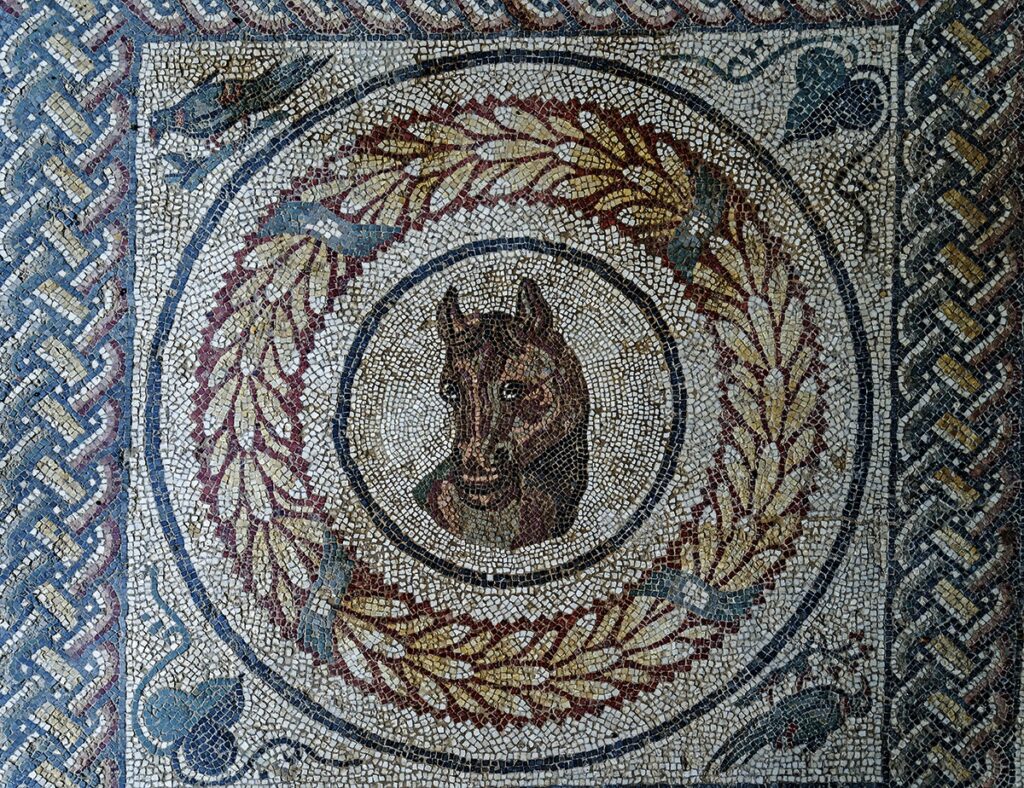Protome is a term derived from the Greek, used in archaeology since the 19th century. It means the very common representation in ancient art of the front, including the head and neck, of an animal or man, though the latter is not seen as often.
The significance of the depicted subject is thoroughly expressed by the artist, using only the front part of the body.
The considerable number of animal protomes depicted in the floor mosaics of the peristyle of the Villa Romana del Casale is certainly linked to the scenes animating the mosaic decorations of other rooms, such as the capture of wild animals in the biapsidal ambulacrum known as the “Corridor of the Great Hunt”, or the hunting in the room of the private apartment, known as the “Small Hunt”, or trophies.
A further hypothesis put forward by scholars is that the peristyle mosaic depicts masks, and that it could also be linked to the ceremony occupying the central part of the vestibule, perhaps referring to a feast celebrated in January, where disguises were used at private feasts.
The direction of the medallions, imbued with vivid realism and faces of animals of different species, is not uniform along the wide corridor but changes direction just in front of the threshold of the vestibule, to highlight the presence of the two different paths: private and public.